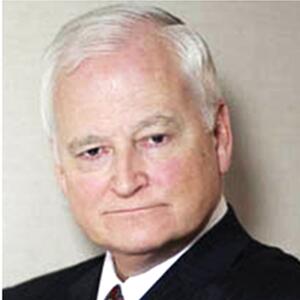Deadline For Executors To Make Portability Election For Post-2010 Estates
(Updated January 28, 2013)
The 2012 Taxpayer Relief Act has made permanent the “portability feature” for estates of decedents dying after 2010. This portability feature allows a surviving spouse to claim on her or his own estate tax return any applicable exclusion amount (the amount excluded from estate tax) not used by her or his deceased spouse. The amount received by the surviving spouse is called the Deceased Spousal Unused Exclusion (DSUE) amount. The 2011 applicable exclusion amount is $5,000,000, the 2012 applicable exclusion amount is $5,120,000 and the 2013 applicable exclusion amount is $5,250,000. The applicable exclusion amount is indexed for inflation. Thus, any applicable exclusion amount that remains unused as of the death of the first spouse to die is generally available for use by the surviving spouse, as an addition to the surviving spouse’s applicable exclusion amount.
Example: Assume that Husband dies in 2013, having made taxable transfers of $3 million and having no taxable estate. An election is timely made on the Husband’s estate tax return to permit Wife to use Husband’s DSUE amount. As of Husband’s death, Wife had made no taxable gifts. Thereafter, Wife’s applicable exclusion amount in 2013 is $7,500,000 (her $5,250,000 basic exclusion amount plus $2,250,000 DSUE amount from Husband), which she may use for lifetime gifts or transfers at death. However, the unused generation skipping transfer tax exclusion amount of the Husband may not be used by the Wife.
A DSUE amount may not be taken into account by a surviving spouse unless the personal representative of the deceased spouse files a timely estate tax return on which the amount is computed, and makes an election (a “portability election”) on the estate tax return that the amount may be taken into account by the surviving spouse. No election may be made if the estate tax return of the deceased spouse is filed after the due date (including any extension) for filing the estate tax return. The election must be made on the estate tax return of the deceased spouse, regardless of whether the estate of the deceased spouse is otherwise required to file an estate tax return.
The Internal Revenue Service (IRS) has released Form 706 – United States Estate (and Generation Skipping Transfer) Tax Return (Form 706), which contains a new Part 6 that will be used to both make the portability election and to allocate the DSUE amount from a predeceased spouse for decedents dying after December 31, 2011. To elect portability of the DSUE amount, timely filing of a complete Form 706 is required prepared in accordance with the instructions for that form. Complete Section B of new Part 6 if any assets of the estate are being transferred to a qualified domestic trust and complete Section C also of new Part 6 to calculate the DSUE amount that will be transferred to the surviving spouse. The personal representative of a decedent’s estate must file the Form 706 within nine months after the decedent’s death or the last day of the period covered ay an extension (if an extension of time for filing has been obtained). A personal representatives of a decedent’s estate is granted an automatic six-month extension to file Form 706, which is requested by timing filing a Form 4768, Application for Extension of Time To File a Return and/or Pay U.S. Estate (and Generation-Skipping Transfer) Taxes. The personal representative is entitled to only one six-month extension to file Form 706. Thus, by timely filing a properly-prepared and complete Form 706 an estate will be considered to have made the portability election To ensure the correct exclusion amount and tax, personal representatives should use the Form 706 issued for the year of the decedent’s death.
The filing of Form 706 is a no-brainer for couples with large estates that are close to the current $10,500,000 combined tax threshold. Preserving the DSUE amount will save future transfer taxes if the surviving spouse’s estate grows beyond the amount of an individual applicable exclusion amount. However the benefit of preserving the DSUE amount is not limited to large estates but will also benefit smaller estates.
If the estate administration attorney is not responsible for filing of Form 706, the engagement letter should so provide. The estate administration attorney should document in the file as to who is to prepare the Form 706.
In summary, the applicable exclusion amount that remains unused as of the death of a spouse who dies after December 31, 2010, is generally available for use by the surviving spouse in addition to his or her $5 million exemption adjusted for inflation for taxable transfers made during life or at death if the personal representative of the estate of the deceased spouse timely files a properly completed Form 706. Both large and small estates should preserve the DSUE amount of the first spouse to die.
About the Author


